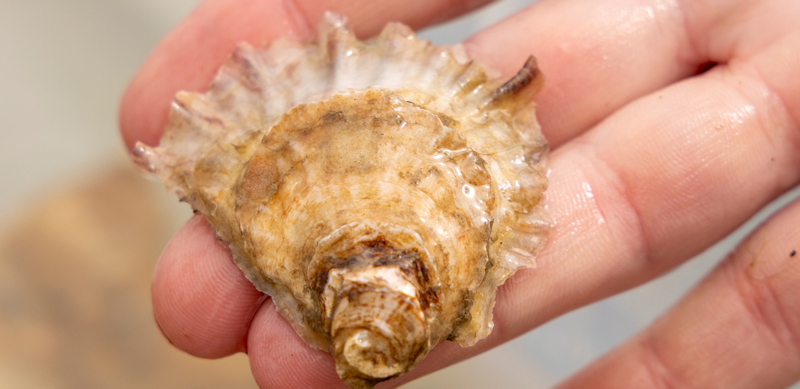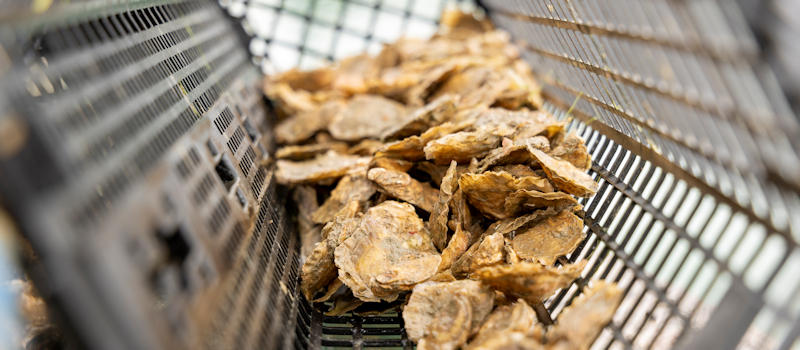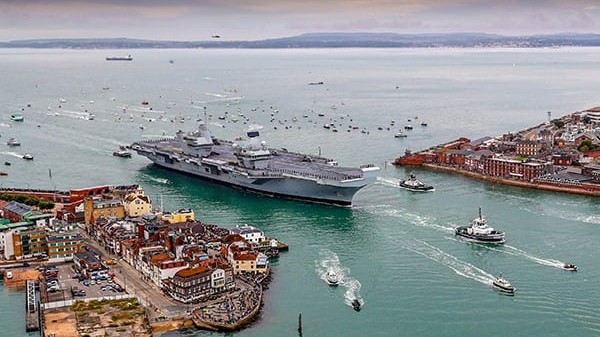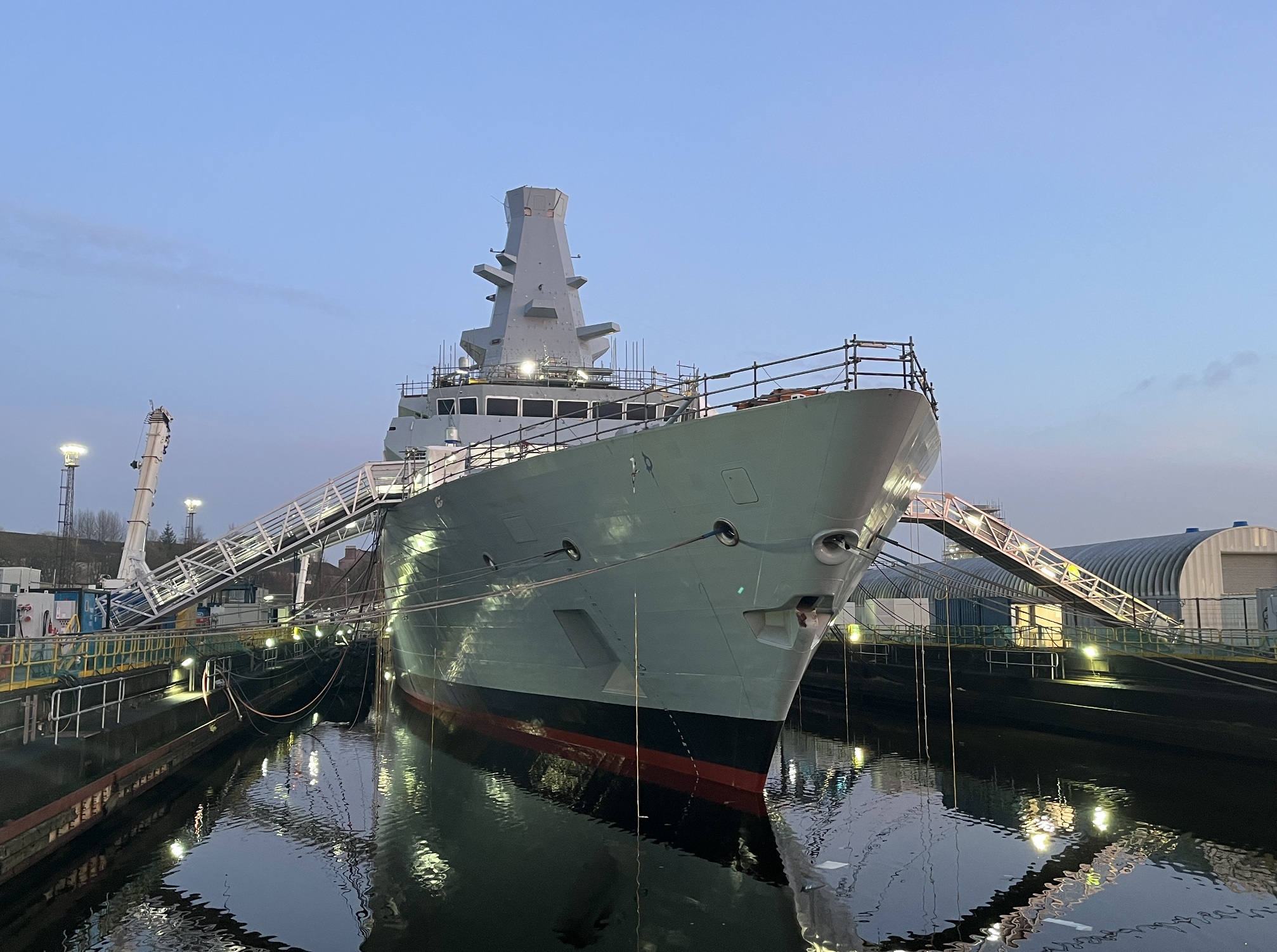Published 28 August 2024
Share this story
The first oyster conservation project on Ministry of Defence (MOD) estate is underway to reintroduce at least 2,000 European flat oysters (Ostrea edulis) – native to the UK and grown at Navy Command’s HMS Excellent headquarters on Whale Island in Portsmouth – to the waters of the strait between the Isle of Wight and the Hampshire coast.
Known as the Whale Island Native Oyster Restoration Project, this is a joint initiative between the DE&S Salvage and Marine Operations (SALMO) Wrecks team, the Royal Navy, the Defence Infrastructure Organisation (DIO), and the Blue Marine Foundation (BMF) charity, to re-establish a healthy population of native oysters.
Having declined by over 95% since the height of their population in the mid-19th century, the severely depleted reef-forming keystone species of oysters are being grown by SALMO and Navy colleagues under pontoons on HMS Excellent to reverse this downward trend. This is supporting BMF’s Solent Oyster Restoration project which is reintroducing the oysters in a bid to enhance biodiversity, clean the water and restore an essential part of the marine ecosystem. This will help to improve the environment in which Royal Navy vessels operate. Healthy coastal seas are also known to contribute to climate resilience, food production and societal wellbeing.

The Solent was once the largest fishery in Europe for the Ostrea edulis oysters but there are few remaining, having been replaced by the invasive Pacific oyster, Magallana gigas, with potentially detrimental consequences to the local marine environment.
The project is managed by Harriet Rushton from the DE&S SALMO Wrecks team and she works with the Royal Navy and Whale Island Conservation Volunteer Group to carry out monthly cleaning and maintenance of the oysters to ensure their development. The oyster crates can become fouled with algae, sea squirts and other marine organisms, especially during spring and summer, which can inhibit their feeding and growth. The team works together to make sure the oysters are receiving a good flow of water that supplies them with oxygen and nutrients.
As filter feeders, just one of the adult oysters measuring 80-90mm can filter up to 200 litres of water a day, removing chemicals and pollutants. This can increase water clarity and enhance growth of sunlight-dependent species and habitats, such as seagrass and saltmarsh, which are also key habitats for coastal protection and carbon sequestration.

As European flat oysters grow, their shells merge into one another, and form reefs. These reefs become biodiversity hotspots, providing shelter and food for marine life, from tiny plankton to larger fish species. The oysters also remove carbon from the environment through calcification, as they extract carbon ions from seawater to build their shells. When the oysters eventually die, their shells become buried beneath sediments and transform into solid beds of limestone, effectively removing carbon from the atmosphere; the process of storing carbon in a carbon pool.
Harriet, DE&S SALMO Wrecks Environmental Manager, said: “It has been very exciting to establish and manage this project. These oysters are being grown for conservation to re-introduce a lost native keystone species in the Solent, which will enhance biodiversity and help clean the water. This shows the MOD’s commitment to improving the UK’s ecosystem and helping to address climate change, thus contributing to minimising climate and ecosystem pressures on MOD training and operations. Thank you to all those who continue to assist and make this happen, and I look forward to continuing this project together.”
Owing to the project’s benefits, Harriet was successful in her bid to receive funding from the DIO Conservation Stewardship Fund to purchase the crates and other equipment needed along with the first batch of juvenile oysters. £5,000 was obtained in the first financial year, to establish the project, and £1,100 in the second financial year, to purchase a second batch of oysters.
At the start of the project, juvenile oysters of around 10mm were purchased with DIO funding from hatcheries around the UK and grown under the pontoons at HMS Excellent. Once they reached the adult size of around 50mm, they were released into the Solent by Harriet and BMF to breed, spawn and restock the local waters. With the first iteration complete, the second is now underway with juveniles bought from Car y mor hatchery – Wales’ first regenerative seaweed and shellfish farm based in Haverfordwest. After approximately 18 months, once fully grown this second batch will be released into the Solent.
Dr Luke Helmer, Restoration Scientific Officer at BMF, said: “It is great to be working on this project together to reintroduce native oysters to the Solent. As part of this, we have created artificial reefs, made from shell and gravel material, onto which the oysters are released, as they require hard substrate on which to attach, grow and spawn. As a keystone species, they can then create their own reefs and further enhance the health of the local marine environment. It will be a pleasure to see this collaboration in a conservation project continue to unfold.”

Rod Jones, Senior Maritime Environmental Protection Adviser at the Royal Navy, who encouraged Harriet to initiate the project, added: “As a longstanding member of the Solent community, the Navy is keen to support improvements to our shared marine environment and as a Government department we are doing what we can to support the UK’s long term ambitions to increase biodiversity and improve the health of our seas. This oyster project is just the latest in a range of improvements the Navy have made, including to vessels and operational practices to lessen impact on the environment.
“Here at HMS Excellent, the efforts of the conservation volunteers have enabled the oyster crates to be maintained and successfully release mature oysters into the Solent. We hope that our experience will enable further suitable locations to be identified and similar projects to be started at other MOD sites.”
Through the initiative, the MOD is helping the UK to achieve its objectives for improving the marine environment, mitigating against climate change and enhancing biodiversity. In turn, the project also contributes to the MOD’s Climate Change and Sustainability (CC&S) Strategic Approach which has been developed to tackle the MOD’s contribution to the UK Government’s CC&S agenda.
Rosie Horner, DIO Senior Marine Biologist added: “The protection and restoration of native species in the marine environment is an important part of the work we carry out throughout the UK and overseas Defence estate. Our coastal sites and infrastructure provide fantastic opportunities for species conservation and I’m excited the DIO Conservation Stewardship Fund has been used to fund such an innovative project. This project will also act as a pilot to assess whether we can work with other partners to scale the project up across other Defence sites around the UK coastline.”
Defence Minister Luke Pollard said: “The Royal Navy has proudly used the Solent for centuries and is dedicated to supporting the local area, including finding ways to offset collective environmental impacts.
“This is a brilliant initiative and the partnership between the Royal Navy and partners, shows that through collaboration, we can improve the marine environment and strengthen biodiversity – to the benefit of our forces too.”










